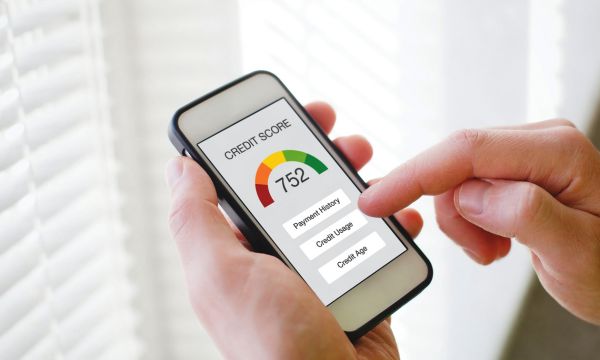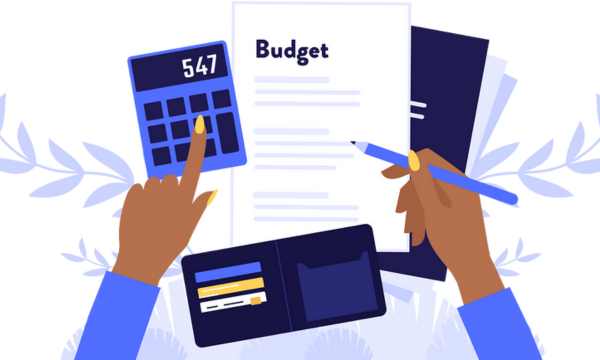A Guide to Creating a Home Savings Plan
Owning a home is a dream shared by many, but due to the high cost of purchasing real estate, this dream often feels out of reach.
ad
However, with careful planning and a solid savings strategy, you can make this dream a reality.
In this guide, we’ll walk you through the steps of creating a home savings plan that will help you achieve your homeownership goals.
ad
1. Define your Homeownership Goals
Before you start saving for your dream home, determine your own home goals.
What type of home do you want to buy? Do you have a specific location in mind? Setting clear and realistic goals can help you determine how much money you need to save.
It’s also important to consider your home-buying timeline because it will impact your savings plan.
2. Make a Budget
A well-structured budget is the basis of every successful savings plan. Start by analyzing your current financial situation. Track your income, expenses, and savings.
Identify areas where you can cut costs and allocate that money to your savings fund. There are many budgeting apps and tools that can help you with this process.
3. Open a Special Savings Account
To keep household savings separate from daily expenses, consider opening a special savings account. This account may only be used for your home purchase.
Look for a high-yield savings account that offers competitive interest rates so your money can grow over time.
4. Set up Automatic Transfers
To ensure a consistent contribution to your savings, you can set up automatic transfers from your main bank account to your special savings account.
Automating the process will make it easier for you to stick to your savings plan and avoid the temptation to spend your money elsewhere.
5. Cut Unnecessary Expenses
Review your budget and identify areas where unnecessary expenses can be cut.
This could include eating out less, spending less on entertainment, or canceling subscriptions that you no longer use. Every dollar you save brings you closer to your goal of homeownership.
6. Increase your Income
Discover not only the costs but also the possibilities to increase turnover.
This could mean taking a part-time job, going freelancing, or starting a side business. Additional income can be a huge boost to your savings plan.
7. Track your Progress
Check your savings progress regularly to ensure you’re on track to achieve your homeownership goals.
If necessary, adjust your budget and savings contributions to match your goals.
8. Invest Wisely
Consider investing some of your savings in long-term, low-risk investments such as stocks, bonds or mutual funds.
Consult a financial advisor to make informed investment decisions that fit your risk tolerance and timeline.
9. Take Advantage of Homebuyer Programs
Many governments and organizations offer homebuyer assistance programs, including down payment assistance and favorable mortgage terms.
Research these programs in your area and take advantage of the ones that work for your situation.
10. Stay Committed
Saving for a home is a long-term effort that requires dedication and discipline. There may be setbacks along the way, but focusing on the goal of homeownership will ultimately lead to success.
11. Review your Goals Regularly
Over time, your circumstances may change, and so can your home-buying goals. It’s crucial to revisit your goals regularly to ensure they are still aligned with your ambitions.
Adjust your savings plan accordingly to reflect any changes in your financial situation or preferences.
12. Build a Good Credit Score
When you’re ready to buy your dream home, a good credit score can help you get a favorable mortgage. Pay your bills on time, reduce your outstanding debts, and maintain a healthy credit utilization ratio.
Obtaining and maintaining good credit not only makes it easier to get a mortgage, but it can also lower your interest rate, saving you money in the long run.

Credit-Score-a-Home-Savings-Plan – Source(Canva)
13. Stay Informed About the Real Estate Market
Keep an eye on the real estate market in your desired location. Understanding market trends can help you make an informed decision about when to buy a home.
During a market downturn, you may encounter opportunities, such as lower home prices or more favorable terms.
14. Settle Cost Plan
Keep in mind that in addition to a down payment, you’ll also need to consider closing costs when purchasing a home.
These fees typically include the costs of appraisals, inspections, and legal services. Be prepared for these expenses to avoid last-minute financial stress.
15. Seek Professional Guidance
If you’re ready to start looking for a home, consider working with a real estate agent and mortgage broker.
These professionals can guide you through the process and help you make an informed decision about the type of home and mortgage that best suits your needs.
Conclusion
In summary, creating a home savings plan is the first step in making your dream of homeownership a reality.
By setting clear goals, creating a budget, and following a systematic savings strategy, you can make steady progress toward purchasing your dream home.
With determination and smart financial choices, homeownership is within your reach.
FAQs
1. Why do I need a housing savings plan?
A home savings plan is crucial because it helps you set clear goals and develop a structured approach to saving for your dream home. It ensures that you raise the necessary money to cover a down payment and other costs of buying a home.
2. How Much Do I Need to Save to Buy a House?
The amount you need to save for a home depends on several factors, including the price of your target home, the size of your down payment, and your financial situation. A general guideline is to save at least 20% of the home price for a down payment.
3. What is the best way to start a savings plan?
To start a home savings plan, start by defining your homeownership goals, creating a budget, opening a dedicated savings account, and setting up automatic transfers. This foundation will help you stay organized and on track.
4. How long does it take to save money to buy a house?
The time it takes you to save for a home varies greatly depending on your financial situation, savings rate, and your target home costs. It may take a few years for some people, while for others it may take a few years to save for a down payment.
5. Can I use my retirement savings for a down payment on my house?
In some cases, you can use money from a retirement account, such as a 401(k), to make a down payment without incurring a penalty. However, this is a complex decision that must be made with caution and taking into account the long-term impact on your retirement savings.
 Essential Guide to Annual Budget Planning
Essential Guide to Annual Budget Planning
Starting on the path to financial success with the Essential Guide to Annual Budget Planning is the first step. ad We go into important details in […]
Keep reading Mastering Monthly Budget
Mastering Monthly Budget
Learning how to make a monthly budget is a lot like learning how to get around in a complicated financial world. ad It means knowing where […]
Keep reading Mastering Home Budgeting
Mastering Home Budgeting
Managing your finances effectively is crucial for a stress-free and secure life. ad One of the most critical aspects of financial management is keeping track of […]
Keep reading